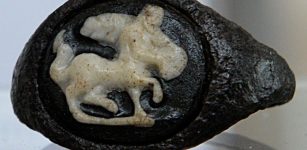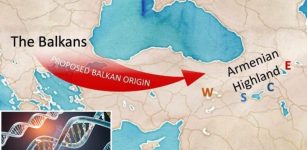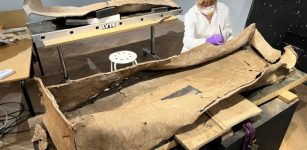Can Diseases Explain Why Neanderthals Suddenly Disappeared About 40,000 Years Ago?
Conny Waters - AncientPages.com - Our knowledge about Neanderthals is increasing but there is still much we don’t know about our closest extinct human relative.
The Neanderthals were members of a group of archaic humans who emerged at least 200,000 years ago during the Pleistocene Epoch. Previous studies have revealed Neanderthals were not as primitive as previously thought.
Between 35,000 and or perhaps even 24,000 years ago Neanderthals were assimilated by early modern human populations (Homo sapiens).
Credit: Public Domain
Neanderthals and modern humans both occupied the Levant for tens of thousands of years prior to the spread of modern humans into the rest of Eurasia and their replacement of the Neanderthals.
Then, about 40,000 years ago something happened and Neanderthals suddenly disappeared. The Neanderthal extinction has been a subject of great interest and many scientists have tried to unravel what happened to our distant cousins.
Did Complex Diseases Cause The Neanderthals' Extinction?
According to a new theory put forward by Gili Greenbaum, a scientist at Stanford complex disease transmission patterns can explain not only how modern humans were able to wipe out Neanderthals in Europe and Asia in just a few thousand years but also, perhaps more puzzling, why the end didn’t come sooner.
“Our research suggests that diseases may have played a more important role in the extinction of the Neanderthals than previously thought. They may even be the main reason why modern humans are now the only human group left on the planet,” Greenbaum said.
It’s unclear when and where did Neanderthals and modern Humans met.
Archaeologists say there is evidence the transition between Neanderthals and modern humans took place about 50,000 years ago in modern-day Czech Republic.
Stanford scientists explain archeological evidence suggests that the initial encounter between Eurasian Neanderthals and an upstart new human species that recently strayed out of Africa — our ancestors — occurred more than 130,000 years ago in the Eastern Mediterranean in a region known as the Levant.
Yet tens of thousands of years would pass before Neanderthals began disappearing and modern humans expanded beyond the Levant. Why did it take so long?
See also:
Did Neanderthals Practice Religion?
Why Did Neanderthals Visit A Special Cave In Jersey For Over 100,000 Years?
Using mathematical models of disease transmission and gene flow, researchers have studied how unique diseases harbored by Neanderthals and modern humans could have created an invisible disease barrier that discouraged forays into enemy territory.
Within this narrow contact zone, which was centered in the Levant where first contact took place, Neanderthals and modern humans coexisted in an uneasy equilibrium that lasted tens of millennia.
Ironically, what may have broken the stalemate and ultimately allowed our ancestors to supplant Neanderthals was the coming together of our two species through interbreeding. The hybrid humans born of these unions may have carried immune-related genes from both species, which would have slowly spread through modern human and Neanderthal populations.
Image credit: Vivian Chen Wong
As these protective genes spread, the disease burden or consequences of infection within the two groups gradually lifted. Eventually, a tipping point was reached when modern humans acquired enough immunity that they could venture beyond the Levant and deeper into Neanderthal territory with few health consequences.
At this point, other advantages that modern humans may have had over Neanderthals — such as deadlier weapons or more sophisticated social structures — could have taken on greater importance. “Once a certain threshold is crossed, disease burden no longer plays a role, and other factors can kick in,” Greenbaum said.
Why Did Humans Replace Neanderthals And Not The Other Way Around?
To understand why modern humans replaced Neanderthals and not the other way around, the researchers modeled what would happen if the suite of tropical diseases our ancestors harbored were deadlier or more numerous than those carried by Neanderthals.
“The hypothesis is that the disease burden of the tropics was larger than the disease burden in temperate regions. An asymmetry of disease burden in the contact zone might have favored modern humans, who arrived there from the tropics,” said study co-author Noah Rosenberg, the Stanford Professor of Population Genetics and Society in the School of Humanities and Sciences.
See also: More Archaeology News
According to the models, even small differences in disease burden between the two groups at the outset would grow over time, eventually giving our ancestors the edge.
“It could be that by the time modern humans were almost entirely released from the added burden of Neanderthal diseases, Neanderthals were still very much vulnerable to modern human diseases,” Greenbaum said.
“Moreover, as modern humans expanded deeper into Eurasia, they would have encountered Neanderthal populations that did not receive any protective immune genes via hybridization.”
Written by Conny Waters - AncientPages.com Staff Writer






















